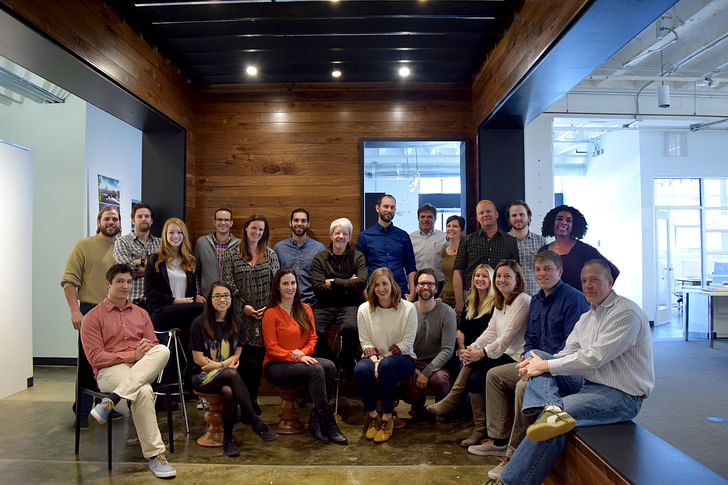

Over the past few years, the field has received a growing amount of attention that has highlighted long standing labor issues within the architecture industry, ranging from unsustainable pay models to unwelcoming work environments. Looking for an alternative, the Architecture Lobby created the Just Design Initiative, which recognizes fair labor practices in architecture. Beginning with nominations submitted by employees, and followed by an evaluation process, the team looked at practices that can serve as models of a new status quo within the profession.
Archinect has teamed up with the Just Design crew to profile firms across the country that meet the initiative's standards. Whether it is a family-friendly work schedule or a health coverage plan that goes above and beyond, the series spotlights practices that honor the basic rights of their employees and can serve as exemplary models of what should become standard for the field.
Having spent twenty-five years working for another company, the founders of BLUR Workshop—Liz Neiswander, Foreman Rogers, Scott Sickeler, Peter Green and Scott Morris—had built up a large body of knowledge on how to run different aspects of an architectural practice. So, when they started the Atlanta-based firm, they were able to take that experience and come out and say what they wanted to keep and what kind of significant changes they wanted to make to the policies they saw at the company they had come from.
From the get-go, the team of five talked a lot about what kind of firm they wanted to build and what was important to everybody. These values are even embedded in their name, which derives firstly, from the desire to blur the divide between architecture and interior design. And secondly, from the want of having a more hands-on design process. Currently, the office has a small workshop area that is undergoing expansion. There, employees work on models and mockups, but it is also meant to be a resource for the community. Employees often come in on the weekend to work on personal projects, and are encouraged to do so.
“We have a lot of really gifted people that work here that kind of have their own shop and do some sophisticated things,” says leadership. “More and more, we are trying to infuse into our culture something that is really important to a lot of people that work here. We’re continuing to grow and develop that part of our practice.”
Incorporating the interests of everyone in the office, and instilling a sense of ownership, has been at the heart of the practice since its founding five years ago. “It’s a very egalitarian operation,” says leadership, who explain that they only have job titles that are required by law (i.e. architects, interns, and principals) and encourage everyone to participate in different aspects of the business.
Younger employees are often sent to conventions and conferences to help foster their specific enthusiasms in the field and build off their skill sets. They are taken to sites, and brought into project meetings so that they can get a firsthand experience of what goes into being a principal, running a firm, or seeing a project get completed. This is also translated into the firm’s pay structure, which is determined based off the type of work an employee is doing, rather than goalposts such as licensure. While licensure can translate into promotions and pay raises, the firm explains, “if someone is behaving like an architect and fulfilling a role that we need, we pay them for that even if they haven’t gotten a license yet.”
As the firm grows, leadership has continued to involve employees in important decisions along the way. For example, one employee, who has three children, is helping to evaluate and improve their health insurance policies. Another, runs the firm’s marketing, and aspects of business development are typically handled by mid-career teammates.
“It’s always been a part of our mission to figure out how to make it be self-sufficient and self-sustaining, long after we are not here,” says the firm's founders. “That’s always been one of the founding principles and why we really encourage the whole team to be involved in different aspects of the business,” they explain.
Recently, when considering whether or not to relocate to a new office, leadership brought employees into the potential new space, broke down the financial obligations, and engaged them in the decision making process. They did so, they explained, not only because the choice would effect them, but also because they want their employees to think like owners. “We want this to be a firm that our employees see themselves staying with and having a stake in,” they said. And to do so, “they need to feel like they have a voice."
No Comments
Block this user
Are you sure you want to block this user and hide all related comments throughout the site?
Archinect
This is your first comment on Archinect. Your comment will be visible once approved.